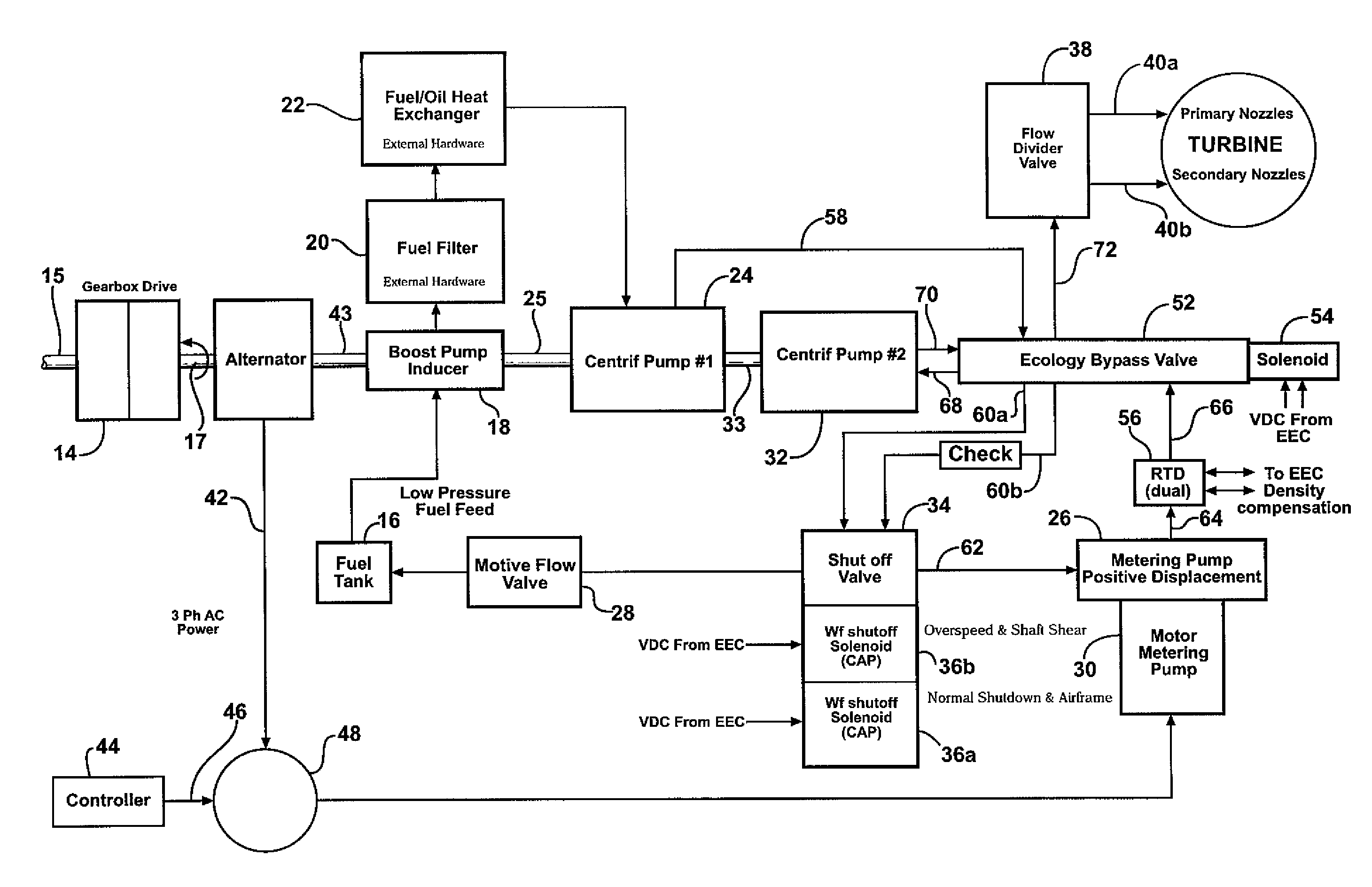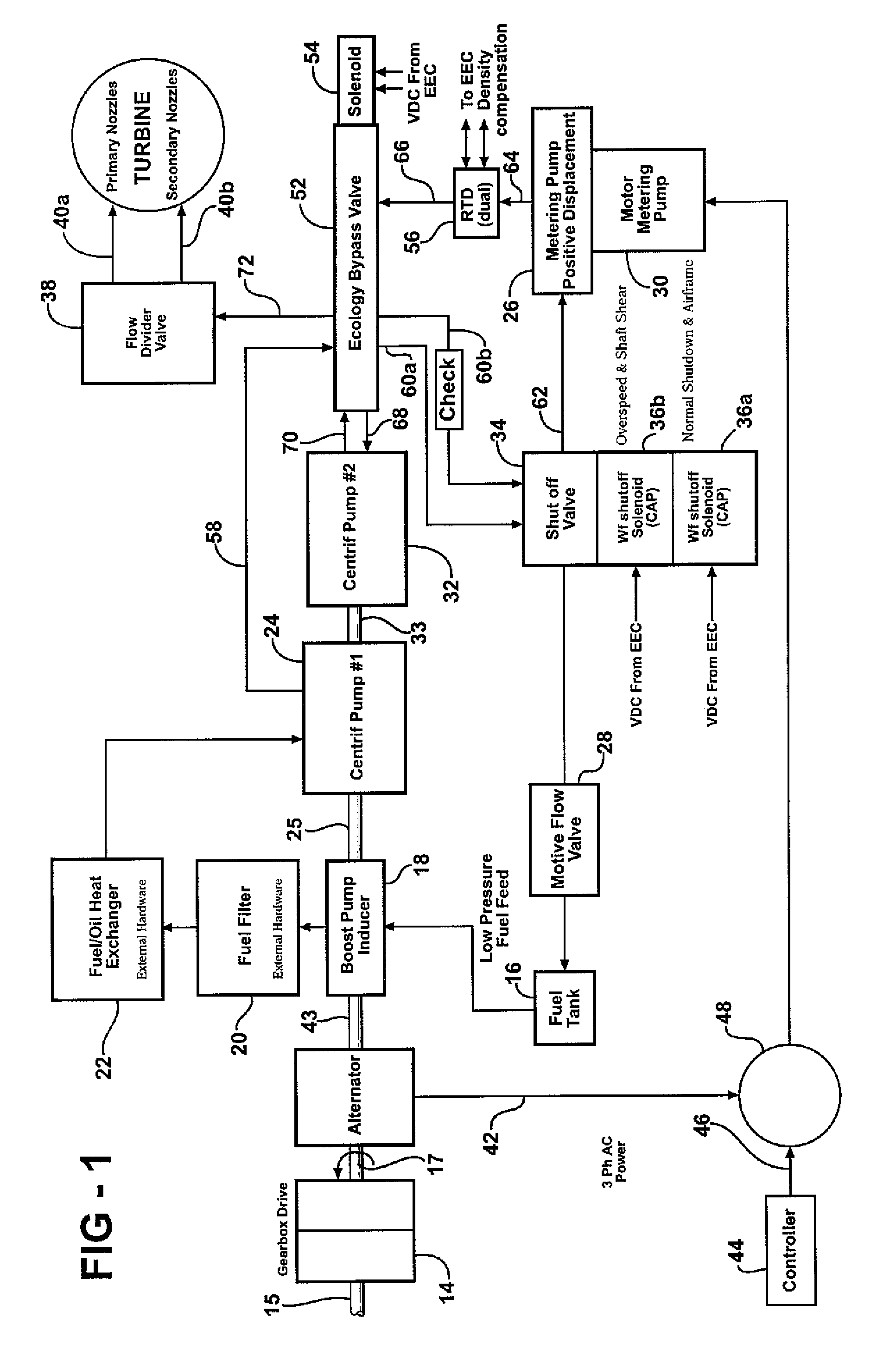Metering demand fuel system
a fuel system and metering technology, applied in the field of fuel systems, can solve the problems of increasing the temperature of the fuel within the fuel tank, not being acceptable in the industry, and using an electric motor instead of a turbine engine to drive the positive displacement pump to meet the fuel demand of the turbine engine, etc., to achieve the effect of reducing access pressure and flow, reducing coking, and high accuracy fuel metering valves
- Summary
- Abstract
- Description
- Claims
- Application Information
AI Technical Summary
Benefits of technology
Problems solved by technology
Method used
Image
Examples
Embodiment Construction
[0016]A schematic of one example of an inventive fuel system 10 is shown in FIG. 1. The fuel system 10 includes a turbine engine 12 that receives fuel from a fuel tank 16. A gearbox 14 is used to drive various components of the fuel system 10 and may be mounted on the turbine engine 12 such that gearbox 14 receives rotational input from the turbine engine 12 through shaft 15.
[0017]The fuel system 10 only illustrates portions of an example fuel system for clarity. The components depicted should in no way be interpreted as limiting the inventive pump arrangement. The example fuel system 10 shown may be suitable for small engine applications such as those used for business jets. Large engine and other small engine applications may have different or additional components.
[0018]The gearbox 14 drives a boost pump inducer 18 through a shaft 43. The boost pump inducer 18 draws fuel from the fuel tank 16 and delivers the fuel to a fuel filter 20 and heat exchanger 22, which removes heat from...
PUM
 Login to View More
Login to View More Abstract
Description
Claims
Application Information
 Login to View More
Login to View More - R&D
- Intellectual Property
- Life Sciences
- Materials
- Tech Scout
- Unparalleled Data Quality
- Higher Quality Content
- 60% Fewer Hallucinations
Browse by: Latest US Patents, China's latest patents, Technical Efficacy Thesaurus, Application Domain, Technology Topic, Popular Technical Reports.
© 2025 PatSnap. All rights reserved.Legal|Privacy policy|Modern Slavery Act Transparency Statement|Sitemap|About US| Contact US: help@patsnap.com


